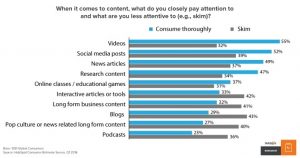
Conversion rate optimization is about how you ensure that visitors to your site carry out the task that you set out for them. Conversion is simply getting your visitor to take an action which you have as a goal. This could be a variety of things – signing up for your mailing list, creating an account, buying something, downloading an app or something else completely!
Whatever it is, this is the action that we are measuring when we talk about conversion rate and the metric which we are going to help you to optimize in this article.
CRO is the method of examining your conversion rate by looking at visitor feedback and analytics to improve the percentage of visitors that carry out the action that you want from them. By working on your CRO, you can understand your visitors and work on ways to get more of them to do what you want on your website.
Conversion rate optimization involves making changes to your website based on insights gained from structured and planned insights. These are based on analytics about changes that you make to your site. It is not about increasing the traffic to your site but about making the most of the traffic that you already have.
Some Key Terms for CRO
For the complete novice, here is a guide to the terms that you may hear about CRO:
Call to Action (CTA) – The call to action is the instruction to the visitor as to what action they should take. It could be a simple text instruction, a button to download something, a form to fill out or it could be something else.
Conversion Funnel – The conversion funnel is the flow or path from the start of the visitor journey to the end where the visitor converts.
A/B or Split Testing – Split testing is where a visitor to your page is shown one of two versions of the same page. You can use the information gathered in split testing to see which version proves to be most effective.
So what are you measuring with CRO?
Conversion rate optimization isn’t just looking at one single metric. You will need to look at a few to really get a feel for how your website is doing and to make sure that your numbers are improving across the board. The numbers can be found by integrating your website with analytics services such as Google Analytics.
You’ll need to keep an eye on the following metrics:
Total Conversions – The number of people who converted by making a purchase, signing up for an email etc.
Conversion rate – The number of conversions divided by the total number of site visitors. For example, if you get 5000 visitors and 50 conversions, you have a conversion rate of 1%.
There’s more too! More information about your visitors will give you a clearer goal to aim for to improve your CRO. You should also keep an eye on your:
Bounce rate – The percentage of people who ‘bounce’ off your site after visiting one page. This should not be a high number as that indicates that you are not providing people with the information that they need when they get to your site.
Exit rate – Each page on your site will have an exit rate. Keep an eye out for single pages which have a high exit rate.
Average time on site – This engagement metric can give you an insight as to whether visitors to your site are hanging around long enough to convert.
Average page views – More pages can mean better engagement but likewise can also mean visitors can’t find what it is that they are looking for.
Why is CRO Important?
- If there is room for improvement, you should always be aiming to improve – It doesn’t matter how beautiful your site is or how eloquent the copy, if your site isn’t converting as many visitors as possible then why the heck not? Working on improving the conversion rate will mean more business for you and your company.
- Paid advertising is becoming more competitive and more expensive every year – Spending more and more to drive new traffic to your site when you could simply be converting the traffic you have more effectively makes much more sense.
- Optimization helps you to get the right kind of conversions – Converting customers help them to become brand advocates for you which means your marketing is done by people who love your products and services and who will tell other people about them.
- CRO is free – CRO doesn’t involve building more traffic which is what costs money. It instead builds on your current investment to make sure that you are extracting the most profit that you can out of it by lowering your total customer acquisition costs.
- More profit from increased CRO means more money to spend on getting new customers who are also more likely to convert – This one doesn’t need more explanation!
- Better CRO builds up your business momentum – A cascade effect occurs when you get a better CRO rate as you then get more customers who help drive more traffic who convert- soon you can dominate the market!
The Basics of CRO
If conversion rate is the total number of conversions divided by the number of visitors you receive – is it the total number of visitors or the number of unique visitors?
When buying online, just as buying in a store on the high street it may take a few visits to get a customer to commit to making a purchase. They may visit your site and look at the item a few times before they actually buy. This means that three of your total visitors are actually the same person. Because of this, many people decide to use unique visitors as their baseline for calculating CRO. However, as people can clear cookies, it could still mean that you aren’t getting an accurate reading of the situation. Whatever you choose, make sure that you use the same metric each time you work it out or it could skew your numbers.
Another thing to consider is what time period you will use for calculating your conversion rate. Consistency is key again – you’ll need to choose a daily rate, weekly rate or monthly rate and stick to it.
I hope you enjoyed this introduction, look out for part two!
Digital & Social Articles on Business 2 Community(120)






